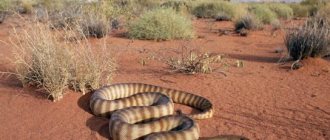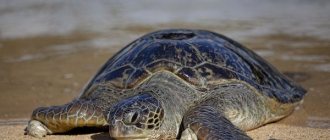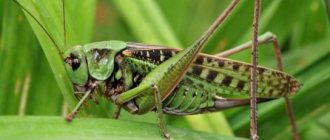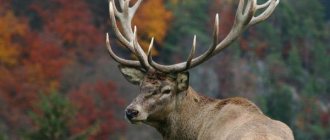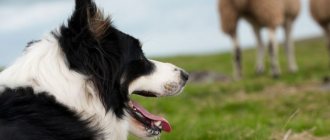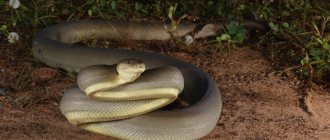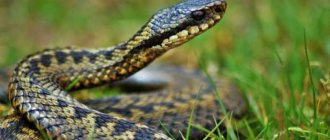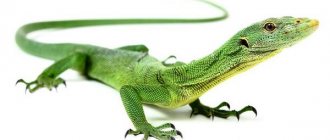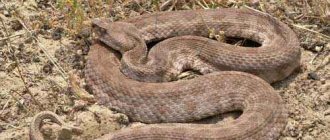The very word “snake” evokes awe, and an actual encounter with some species does not bode well. Beauty bordering on mortal danger. Gracefulness with seeming drowsiness and slowness. During evolution, they acquired a lot of incredible abilities, which significantly distinguishes them from other living creatures of the earth's fauna. Let's overcome fear, and the most beautiful snakes on the planet are collected in our unique terrarium. As in any terrarium, we will make signs of snake species and their names with photos.
The most beautiful snakes on our planet:
1
Texas White Snake / Elaphe obsolete lindheimeri
The second name of the snake is the white rat snake, and it lives in vast areas of North America. Settles in river valleys and damp forests. May live near cities.
This snake reaches a length of 1.8 m. The color, as can be seen from the species name, is white, but black and bright orange individuals can be found. It feeds on rodents, frogs, and is excellent at catching lizards.
They are non-poisonous, but have an aggressive disposition. The bite is very painful. Sharp teeth penetrate deeply into the body, which is why the wound bleeds for a long time. It is necessary to immediately treat the bite site to avoid infection.
2
Literature
- Bachman ES 1985. Distribution and variability of the Sri Lankan pipe snake (Cylindrophis maculatus). J. Bombay Nat. Hist. Soc. 82 (2): 322—327
- Boulenger, G.A. 1893. Catalog of the snakes in the British Museum (Nat. Hist.) I. London (Taylor & Francis), 448 pp.
- Das, I. & De Silva, A. 2005. Photographic guide to snakes and other reptiles of Sri Lanka. New Holland Publishers, 144 pp.
- de Silva, A. 1998. Snakes of Sri Lanka: a checklist and an annotated bibliography. Dept. Wildlife Conservation/GEF/UNDP/FAO, Colombo.
- Duméril, A. M. C. and G. Bibron. 1844. Erpetologie Générale ou Histoire Naturelle Complete des Reptiles. Vol.6. Libr. Encyclopédique Roret, Paris, 609 pp.
- Janzen, P.; Klaas, P. & Ziesmann, S. 2007. Sri Lankas Schlangenfauna. Draco 7(30):56-64
- Linnaeus, C. 1758. Systema naturæ per regna tria naturæ, secundum classes, ordines, genera, species, cum characteribus, differentiis, synonymis, locis. Tomus I. Editio decima, reformata. Laurentii Salvii, Holmiæ. 10th Edition: 824 pp.
- McDiarmid, R. W.; Campbell, JA & Touré, T.A. 1999. Snake species of the world. Vol. 1. Herpetologists' League, 511 pp.
- Smith, M. A. 1943. The Fauna of British India, Ceylon and Burma, Including the Whole of the Indo-Chinese Sub-Region. Reptilia and Amphibia. 3 (Serpentes). Taylor and Francis, London. 583 pp.
- Wall, FRANK 1921. Ophidia Taprobanica or the Snakes of Ceylon. Colombo Mus. (HR Cottle, govt. printer), Colombo. xxii, 581 pages
This is a draft article on herpetology. You can help the project by adding to it.
To improve this biology article, it is advisable to:
After fixing the problem, remove it from the list. Delete the template if all defects have been resolved. |
Original: Original:
King Cobra / Ophiophagus hannah
The largest poisonous snake belongs to the asp family, and it settled in the countries of Southeast Asia. They prefer to hide in caves and deep holes, but can also live in trees.
The average length reaches 2-4 m, but there are specimens over five meters. Thus, in the London Zoo there lived a cobra that grew to 5.71 m. The color is dark brown, but there are also individuals with a greenish-yellow tint. The cobra has a hood that makes it stand out from other snakes.
When meeting a cobra, experts advise a person to sit at eye level with the snake, breathe evenly and try not to move. She will consider the person harmless and will eventually crawl away.
3
Aspid snakes
are represented by a large family, where all species are poisonous. Most adders have a rounded head that extends into the body. Shortened upper jaws with a pair of poisonous teeth. The bite causes the victim to stop breathing and cardiac activity.
Tape krait (pama)
It lives on the Indochina Peninsula, a territory of Southeast Asia. A very poisonous snake. The characteristic color includes 25-35 bright yellow and black transverse stripes. Scales with a triangular cross-section. The length of the snake is 1.5-2 meters.
When attacking a victim, it bites repeatedly and inflicts lacerations. The poison causes tissue necrosis and paralyzes the nervous system. Without medical assistance, the death of a person affected by the band krait occurs within 12-48 hours. Hunts at night. During the day they avoid the sun, hide under stones, in damp places.
Shield cobras
The remarkable appearance of the head is associated with the burrowing nature of the activity of snakes. Laterally, the intermaxillary shield is expanded, the edges rise above the snout. The length of the body is approximately 1 m, the color is yellow-orange, with a pattern of black stripes, the width of which tapers towards the tail. A contrasting outfit warns of the danger of encounters with a cobra.
Shields are rare species of snakes in terms of numbers. They live in Africa. They do not attack without warning signals - the hissing of the inflating hood. In danger, it can pretend to be dead, turn over on its belly, and freeze. In captivity they adapt and reproduce. They are distinguished by their vindictiveness towards offenders who caught them in the wild.
Water ringed cobra
A unique snake that is difficult to study due to its particularly secretive existence. It got its name for its special pattern of rings around the body. A snake with a black tail, contrasting combinations of yellow-brown, gray-black tones. Like its earthly relatives, in irritation it opens a fold of skin called a hood.
The smooth, shiny skin is highly valued by snake catchers. Cobra lives on the coasts of African states. On land it moves clumsily, in water it moves quickly. When in danger, it swims away. The poison causes necrosis and paralysis.
Red spitting cobra
The self-explanatory name conveys the snake’s amazing ability to shoot out poisonous contents with sharp muscle contractions. Cobra anticipates the movement of the enemy's head in order to hit the enemy's eyes with thin jets. Incredible precision is achieved at high spray rates. The size of the snake is 1-1.5 meters.
Coral adder
The snake is one and a half meters long and has a bright color. Alternating black and red rings with a white edging and a scattering of dark dots. The head is flattened. The dangerous adder lives in the Amazon basin and prefers damp areas. The narrow mouth opening allows feeding only on small prey. The bites are fatal. The snake bites into the victim and does not let go in order to hit the enemy harder.
Taipan
Inhabitant of the Australian coasts, found in New Guinea. A medium-sized snake, one of the most poisonous in its family. The color is uniform, brown-red. The head and belly are lighter than the back.
The taipan is aggressive, hits the victim several times, and has a neurotoxic effect. Without urgent help, a person dies within 4-12 hours. It feeds on rats and mice and often approaches populated areas in search of food.
Tiger snake
The color of the scales is golden-black with characteristic rings, similar to tiger skin. There are individuals of black color. It lives in Australia, New Guinea in pastures, meadows, and areas with open forest.
The venom of one reptile is enough to kill 400 people. In terms of potency, the tiger's venom is the strongest among snakes. She doesn't attack first. All cases of bites were for the purpose of self-defense. The danger is that during the day the snake is not noticed when it lies calmly like a branch or stick, and people unintentionally step on it or crush it.
Spectacled snake
The body of the Indian cobra is covered with smooth scales, the color of which can be yellowish-gray or black. Body length up to 180 cm. A distinctive feature of the snake is glasses, or pince-nez, painted on the unfolded hood. The expansion of the cervical ribs in case of danger warns the predator that it is ready to attack.
Reptiles are found in mountainous areas and are found near human habitation in ruins and termite mounds. Very poisonous snakes. In Indian culture, they are credited with magical properties and given pride of place in tales and legends.
Black Mamba
Inhabitant of semi-arid zones of Africa. The snake is notable for its size – 3 meters or more, its speed – over 11 km/h. The mamba's throw is extremely accurate. For a long time there was no antidote for her bite.
A person could die in 40-50 minutes from paralysis and respiratory arrest. The danger of a snake lies in its excitability and extreme aggression. Despite their specific features, species of black snakes, including mamba, are considered to be among the most beautiful reptiles.
Lizard Snake / Malpolon monspessulanus
A fairly large snake, growing up to 1.8 m, widely distributed in the Mediterranean region, Asia Minor and the Middle East. In Russia it is found in the Caucasus.
Adults are olive-brown in color with a characteristic dark stripe. Young snakes are lighter in color. They have dark, almost black small spots on the upper surface of their body. The muzzle is slightly rounded.
In times of danger, it tries to hide in a hole or under stones, and when this is not possible, it behaves aggressively. It inflates its body, hisses loudly and can jump up to one meter to bite.
4
What to do when meeting a snake
The first and always effective rule is not to tease the reptile! The vast majority of snakes do not care about you, and they are not going to attack first. It’s just that many of them have very poor hearing and sense of smell, and they may not notice you until the last moment. Hissing, attacking and biting are only a defensive reaction to unexpected contact and the inability to hide. If the snake notices you in advance, it will definitely try to avoid meeting you.
Remember that the more sun and warmth, the faster and more active the snakes are; the colder it is, the more lethargic and slow they are.
Therefore, when going out into nature - attention, attention and attention again! Walk carefully, watch your step, and in the dark, light the road with a flashlight. At a rest stop, do not leave sleeping bags and tents open. Before going barefoot into shallow water or putting your hands in thick grass, under stones or under bush branches for a mushroom or flower, at least poke a long stick into a suspicious place. If you notice a snake, do not make sudden movements (especially in its direction), let it calmly crawl out of your way. Even if she is already curled up into a ball, hissing or lunging in your direction, she will slide into shelter at the first opportunity.
Ideally, you should not go into the forest alone (so that there is someone to help in a critical situation), wearing appropriate protective clothing and shoes.
Sandy ephas / Echis carinatus
You can meet a small snake in the countries of Central Asia, Southeast Asia and the USA. It grows no more than 75 cm. In spring and autumn it is nocturnal, and in summer it is active during the day.
They have a light zigzag stripe on their sides, and the body itself is covered in dark, almost diamond-shaped spots. It moves along the sands using a kind of lateral movement. First he throws his head to the side, and then pulls his body up.
In India they are called rana, and in the USA - saw-scaled viper. It feeds on rodents and can hunt scolopendras and lizards. But, no matter what it is called, it is a very poisonous reptile.
By the way, on our website topcafe.su there is an interesting article about the most poisonous frogs in the world.
5
Pseudophods (boa constrictors) snakes
The rudiments of the pelvic bones and hind limbs in the form of horny cones gave the name to the family. The gigantic species of snakes in the photo are striking in size, the length of their dense bodies is 8-10 meters, although there are dwarfs up to half a meter long.
Anaconda
The massive body with a small head weighs approximately 100 kg, the length of the giant is 5-6 meters, although there are reports of larger individuals. The reptile is capable of swallowing prey similar in size to itself. The body diameter is 35 cm, but it stretches to the size corresponding to the prey. The mouth and pharynx can also enlarge, so the anaconda does not pay attention to the size of the victim.
Anacondas do not have poisonous glands. The wounds inflicted are painful, but not fatal. The color is marsh, allowing it to camouflage well in the environment. It lives in South America, settles near bodies of water, and swims for a long time. If a body of water dries up in the heat, the anaconda buries itself in the damp bottom and becomes numb until better times.
Reticulated python
The giant lays claim to the title of the largest snake, as giant specimens grow to 8-10 meters or more. It lives on mainland and island territories of Southeast Asia. Leads a predominantly terrestrial life, but climbs into trees to rest and hunt, and loves to lie in the water.
They do not avoid human settlements, as they always find something to profit from - chicken, piglets, yard animals, which they smother with their mass. The brown color and pattern of small rhombuses in the form of a grid gave the creeping giants their name.
Tiger python
There are very few beautiful reptiles left in nature; in Asia, the homeland of pythons, they were exterminated because of their spectacular skin, blood, bile for medical purposes, and meat. The endangered species is often bred and kept in captivity.
The giant is safe for humans. They lead a sedentary, quiet lifestyle. Pythons swim well and love swampy places. Juveniles climb trees, but eventually stop doing so. They grow throughout their lives, so there is a direct relationship between the size and age of the snake.
Black python (Belena)
The average size of a snake is 2-2.5 meters. The pattern of white and yellow lines on a shiny black background is very effective. The habitat covers the island territory of New Guinea. Snakes stay in places with rocks with deep fissures for shelter.
The black color allows animals to quickly warm up at low temperatures. In close proximity to black pythons, there are no other snakes that cannot withstand the conditions of temperature changes - high ultraviolet radiation, night cold.
Common boa constrictor
In its group, it is the most common snake, living in foothill areas, river valleys, and near human habitation. Preference is given to tropical rain forests.
In Mexico, the boa constrictor was considered God's messenger and was not disturbed without reason, since hissing was a sign of misfortune. Conducts twilight, night hunting, relying on an excellent sense of smell. The boa constrictor's vision is weak, and hearing is practically absent. It can survive without food for several months.
Western boa
The snake is medium in size, body length is approximately 80 cm. Studying the species of snakes in Russia , one cannot help but pay attention to this secretive, mysterious creature that lives in Chechnya, the south of the Stavropol Territory. Meeting him is a great success.
It loves shelter in rodent burrows and among snags, but easily burrows into the ground, avoiding encounters. The eyes are located on the sides of the head, unlike its sandy relative. Boa constrictors are characterized by color variability. Juveniles are almost pink in color, but then the back becomes reddish, brown, or gray with scattered dark spots.
Rough Tree Viper / Atheris squamigera
The photo shows a poisonous snake from a large family of vipers that lives in Africa. Adults grow no more than 78 cm, and females are much larger than males.
The inhabitants of the African continent have a variety of colors. There are completely yellow, green, blue, and some with a reddish tint. They choose mainly damp forests, hiding among stones and thickets.
The strong poison has hematological effects. It rarely attacks humans, but in history there have been two recorded deaths from a tree viper bite.
6
Belcher
Belchera is a sea snake. It lives in salt waters of Indonesia. In general, Belchers are friendly, but if angered, they are very aggressive and poisonous.
Belchera has a striped color, which allows it to hide unnoticed among the algae. And in crystal clear water it looks simply incredible.
Photo source: https://travelask.ru/
Garter snake / Thamnophis sirtalis
These small-sized snakes with different colors are also called garden snakes. They feel great both among the plains and high in the mountains.
They settled from Mexico to the northern regions of Canada. They lead a diurnal lifestyle and grow no more than 80 cm. Females are slightly larger than males. The only species of couchi gigas can reach a record height of 1.4 m.
They can be easily identified by the stripes along their entire body. In some species there are up to 8 such longitudinal stripes. They feed on tadpoles, frogs, and hunt salamanders and ground lizards. In total, more than 40 subspecies of garden snakes are distinguished in zoology.
7
Green mamba / Dendroaspis viridis
In tropical rainforests you can meet one of the most dangerous snakes in nature. But it’s better to bypass it. The fast-acting poison causes tissue necrosis and leads to paralysis.
The mamba has a graceful build. The body is bright yellow-green in color. There are individuals whose tail is completely yellow. The belly is white or with a light yellowish tint.
Leads a terrestrial and arboreal lifestyle. It hunts during the day, but can crawl out of its shelter at night. This is an agile and fast snake, capable of developing high speed when moving.
Snake poison.
Snake venom has a complex composition. It contains enzymes
, changing or destroying many body substances, toxins, proteins with a specific effect. Different species of snakes use different potent substances.
The venom of aspid and sea snakes contains neurotoxins and acetylcholinesterase, which destroys acetylcholine. In the body of a bitten animal, the transmission of signals from nerves to muscles is disrupted, and muscle paralysis develops. Most often, the animal dies from respiratory arrest.
The venom of viper and pit snakes causes an increase in the permeability of blood vessels, disturbances in the blood coagulation system and a drop in blood pressure. As a result, hemorrhagic swelling of tissues develops and their blood supply deteriorates.
There are many serums used to treat envenomation, some can be used against the venoms of several species of snakes.
The activity of snake venom is assessed in MED - mouse action units: when studying various toxins, they are injected into laboratory mice and the amount of poison that can kill 50% of experimental animals is determined. 1 HONEY corresponds to the activity of 0.11 mg of viper venom or 0.0776 mg of viper venom.
About 500 species of snakes are dangerous to humans. It is believed that up to half a million people are bitten by snakes every year, of which up to 50 thousand die. Of course, this is not the most common cause of death in the modern world. Snakes do not attack without reason and try to save their poison. The work of scientists to create serums has significantly reduced the number of deaths from snake bites. For example, in Thailand at the beginning of the 20th century. up to 10 thousand people died per year, today – 20 people
To obtain the serum, horses are injected with small amounts of poison. Over the course of several months, they develop immunity to the poison and antidote substances appear in the blood, which become the basis of the serum. Antidotes adsorb the poison, can oxidize it or form insoluble salts with it, and also, competing with the poison, displace it from compounds.
To obtain snake venom, snakes are kept in special rooms - serpentariums, the first of which was created at the end of the 19th century. in Sao Paulo (Brazil) at the Institute of Snake Research. Now in Russia there is a large serpentarium in Novosibirsk (there were more than ten of them in the USSR).
Snake venom in small doses is used for medicinal purposes; it has an anti-inflammatory effect, has an analgesic effect, and also stimulates tissue regeneration.
Anaconda / Eunectes murinus
Among the dangerous giant scaly inhabitants of the planet, one of the most beautiful is the anaconda. Europeans first saw this huge creature in 1553.
The main color of the anaconda is grayish-green with two rows of dark spots. There are rows of small yellow spots on the sides. The body is massive, which is why it has practically no enemies in wildlife. Few people would dare to fight such a giant.
It feeds on mammals, and when settling near a person’s home, it attacks domestic animals. There are many legends associated with it, on the basis of which works of fiction have been written and films have been made.
9
Horned Viper / Cerastes cerastes
An unusual snake with two growths on its head in the form of horns lives on the Arabian Peninsula and North Africa. Not found only in Morocco.
The color is sandy yellow with characteristic spots all over the body. This color is in harmony with the sandy desert, so it can easily hide. Hunts small mammals and birds.
The ancient Egyptians knew about the horned snake. Her image can be found on the walls of tombs, and the ancient Greeks introduced her name into their alphabet with the letter “phi.”
Don’t miss our fascinating material on our website topcafe.su about 15 very beautiful deserts that amaze with their landscapes.
10
Viper snakes, or vipers
constitute a family capable of adapting to any landscape. The head is triangular-round in shape, with protruding temporal corners. The reptile opens its mouth up to 180°, protrudes long poisonous fangs to kill. All types of vipers are poisonous. Snakes are widespread, Australia is the only continent other than Antarctica where viper snakes are not found.
Copperhead
A medium-length snake with a short tail covered with scutes. The border of the head and neck is well defined. The color includes a combination of red-brown shades, a pattern of transverse uneven stripes with edges.
The second name of the snakes corresponds to the color - moccasin. It lives primarily in the southeastern United States. The cunning of a snake manifests itself in bites without warning. The poison disrupts blood clotting, causing nausea and pain. The readiness to attack is reflected in a pose similar to the letter S.
Mexican rattlesnake
The pit snake is dark brown in color with a diamond pattern. The tail is distinguished by alternating black and white stripes, which gradually taper. Large reptiles, up to 2 m long, snakes choose rocky places to live, far from the coast.
They don't like humidity. Reptiles are common in Central and South America. Like all rattlers, when moving, the snake creates a noise like a rattle. The clicking sounds are caused by the friction of the scales on the tail. Movement of segments is a danger signal.
Common viper
It is widespread and encounters with mushroom pickers are not uncommon. Length is approximately 70 cm, color is brown-black, sometimes with a yellow-gray tint. Scales with pronounced ribs.
It chooses overgrown, dry habitats. Loves clearings, floodplains of mountain rivers, rocky slopes. Snakes lead a sedentary life and form gathering places unevenly. Sometimes they wander for several kilometers if there are not enough food resources.
Long-nosed viper
The scaly growth on the snake's face makes it snub-nosed. You can meet the long-nosed viper in Europe and Asia Minor. Color red-brown, gray, sand. The tip of the tail is green or red. The snake is poisonous, but no one died from bites.
Steppe viper
The size of the snake is smaller than ordinary, body length no more than 65 cm. There is a zigzag stripe on the back. The viper is widespread in the Caucasus, Central Asia, Turkey, and Iran. Loves open spaces, various types of steppes. The poison is not very strong and does not lead to the death of people and animals, but toxic poisoning causes a lot of anxiety.
Horned keffiyeh
Inhabitant of Southeast Asia, China, India. The snake cannot be confused with others because of the small horns above the eyes. The body is up to 80 cm long, painted in a light green tone, with brown spots scattered throughout. The appearance resembles a pointed spear. They lead an arboreal or terrestrial life. Most snakes do not exceed 1 meter in length. They hunt at night and hide in hollows and bushes during the day.
Chinese viper
They live in the mountainous regions of Southeast Asia at an altitude of up to a kilometer. The body is dense, gray-brown in color with transverse yellow-orange stripes, the head is completely yellow.
Venom glands are relatively small. They are found in rice fields, along roads, among bushes, near human settlements. It does not always rush at the offender, it hisses, and swells up threateningly. If it bites, it does not let go until the victim stops showing signs of life.
Gyurza
A large reptile, body length on average 2 m, weight 3 kg. Venomous species of snakes with the most dangerous bites include the viper. In Latin, its name is translated as grave viper.
Found in Asia and North Africa. The color is not bright. The main background is gray in various shades, spots along the ridge are rusty, brown. Head without drawing. It chooses habitats in the foothills. Hides in rock cracks, near mountain streams. Crawls into vineyards, melon fields, and cultivated fields.
Bushmaster (surukuku)
A real giant among its relatives, the viper is approximately 4 m long and weighs 5 kg. Found in the humid tropics of Central America. Despite its gigantic size, the snake is cowardly and not aggressive. The body is of rare triangular shape. The characteristic color is yellow-brown, with a pattern of large dark diamonds on the back.
It hunts at night, sitting in ambush for a long time, waiting for prey. When meeting a large animal, a person prefers to hide, although in one bite she injects a huge dose of poison, in many cases fatal. Beats its tail threateningly, imitating a rattlesnake.
African pygmy viper
Among its relatives, it is the smallest and most harmless snake. But the bite, like other reptile attacks, causes unpleasant consequences. The length of the viper is only 25 cm. The color is sandy-brown. Lives in Central Africa. The peculiarity of the snake is that it moves sideways, which allows it not to get burned in the hot sand and to have minimal contact with the surface.
Noisy Viper
Inhabitant of Africa, the south of the Arabian Peninsula. A highly poisonous snake whose bites are fatal without immediate treatment. The golden beige skin has a U-shape pattern that runs all over the body. At night it bites without warning. During the day, it practically blends in with its colorful environment, basks in the sun among the grass, sometimes crawls onto the asphalt, and is not afraid of people. Swims well and can bury itself in the sand.
South China Multistriped Krait / Bungarus multicinctus
The range of the beautiful snake extends to Taiwan, the southern regions of China, Vietnam, Myanmar, and Thailand.
The body is thin with a small head. The krait is poisonous, and grows no more than 1.5 m. Although in the wild there are individuals up to 1.85 m. The black body is covered with white transverse stripes. It feeds on rodents, eats insects, lizards.
Lives among rocks, sometimes rising to a height of 1,500 m above sea level. The contrasting black and white snake is easy to see, but it is better to avoid this dangerous reptile.
11
Sea snakes
differ in structure from their terrestrial relatives. The tails are flattened, which helps in swimming. The right lung extends along the body to the tail. To take in air, they emerge; in the water, their nostrils are closed with a special valve. Most sea snakes cannot move on land.
Two-color bonito
A beautiful and dangerous creature of nature. A sea snake with a strap-like body, the length of the flattened body is approximately 1 m. The color is contrasting - the top is dark brown, the bottom is yellow, the tail combines both colors in the form of spots.
The snake is very poisonous. One drop can kill three people. Lives in the Indian and Pacific Oceans. It is found in the open sea, in the coastal strip, where it hides among algae, guarding prey. It does not rush at a person unless teased or frightened.
Dubois sea snake
They live on the coasts of Australia, where scuba diving enthusiasts encounter snakes most often. Favorite places are among corals, muddy sediments, algae at a depth of 1 to 30 meters. The color of the snake is light brown, there are transverse spots on the body along the back and sides.
Sea krait (large flattail)
Inhabits sea waters along the coasts of Indonesia and the Philippine Islands. The peculiarity of the snake is the need to rise to the surface every six hours to breathe air. Sailors know that the appearance of kraits means the proximity of land.
The snake is very poisonous, but uses poison only for hunting and self-defense. When meeting, you cannot provoke the krait into aggression. A drop of poison is enough for a dozen victims. The color of the snake is bluish-green with black rings along the body. If fishermen catch a krait in their net, they leave their catch to avoid encountering a dangerous predator.
The world of snakes is incredibly diverse. Among the snakes there are giants and miniature creatures. They amaze with strength, speed, dexterity, and accuracy. Studying species reveals many secrets of nature's amazing creatures.
Coral adder / Micrurus
The multi-colored reptile has a distinctive pattern of red, black, yellow and orange rings. Color varieties depend on the species and habitat.
Distributed in North and Latin America, from Uruguay to the southern regions of the United States. They have deadly poison. After a bite, if an antidote is not administered and treatment is not provided, the person can die within 24 hours.
Handsome adders feed on small rodents, insects, and lizards. They can hunt amphibious forest inhabitants. In nature, there are several non-poisonous species that have adapted their color to their poisonous counterparts.
Red snake habitats
These representatives do not welcome the heat, and therefore they can be found near water sources: rivers, lakes, ponds, reservoirs. Thickets of coniferous forests often become their favorite habitat.
The diet of a royal representative can be the most unpredictable. In addition to typical food for snakes: small rodents, birds, rabbits, lizards, etc., they are capable of swallowing their own kind or even feasting on poisonous large snakes.
Worth knowing! The little royal is not dangerous for people. Its teeth are not capable of biting through human skin to release poison. But it easily deals with other victims: it paralyzes the prey with poison, and then successfully eats it.
Such specimens live up to 14-15 years. It can be kept in an apartment as a pet.
Cross-striped Kingsnake / Lampropeltis triangulum
The colubrid family is represented in our terrarium at topcafe by a beautiful snake with white stripes along its bright orange body.
This is a striking example of mimicry in wildlife, when its color resembles coral adders. They grow no more than 1.5 m, and live in the Western Hemisphere. This species is widespread in Canada, Mexico, and Uruguay.
One of the most beautiful species is the king milk snake, which lives in Florida and New Jersey. Life expectancy is no more than 10 years. In captivity it can live longer. It feeds on lizards and eats large insects. It creeps out to hunt at dusk, and during the day it prefers to hide in a shelter.
13
Spectacled cobra / Naja naja
The dangerous snake is also called the Indian cobra, and adult specimens grow up to two meters in length. It lives over a fairly large territory, from the countries of Asia Minor to the Philippines.
The cobra is colorfully painted. The color can be varied, but the main color is fiery yellow, sometimes with a blue tint. There are characteristic designs on the head and hood. The pattern on the head resembles glasses, which gave it its species name.
It seems slow in nature, but when necessary it can swim quickly and nimbly crawl along tree branches. It is this type that fakirs often use in their circus and street performances. But before that they are deprived of their sharp teeth.
14
Characteristics and structure of snakes
Until recently, science knew of 3,200 species of snakes, and only 410 species were poisonous. The most interesting and unusual feature of cold-blooded animals is their unique body structure. An adult can grow up to nine meters in length. The smallest snakes grow up to 10 cm. The same fluctuations apply to the weight of representatives of the squamate order, starting from 10 g and reaching 100 kg. The main distinguishing feature of males is their long tail; they also grow smaller in size.
The variety of body shapes is simply amazing. There are individuals that have a long and thin body, or, conversely, a short and thick body. Those snakes that live near the sea have a flattened appearance and often resemble a ribbon. The skin of cold-blooded animals is predominantly dry, completely covered with scales or peculiar scutes. In different parts of the body, the surface is different, for example, on the sides and on the back the scales are small and resemble tiles (as they overlap each other). The belly of most snakes is “studded” with wide semi-circular plates.
The snakes' eyelids are motionless and seem to be able to hypnotize their prey. Reptiles never blink and even sleep with their eyes open. The unique structure of the skull allows even the smallest individuals to open their mouths enough for a small rabbit to fit into it. This is because the upper jaw is connected to neighboring bones and is movable, while the elements of the lower jaw are connected by a ligament that stretches.
Due to the unusual body, the structure of the organs is also unique: they are all elongated and elongated closer to the head. The skeleton has a total of about 200-400 vertebrae, each of which is movable and connected by ligaments. The snake glides along the ground due to the movement of the scutes located on the belly. Thanks to the keratinized layers of the epidermis, cold-blooded animals move quickly without difficulty.
Despite all the features of snakes, reptiles have poor eyesight and hearing. In return, nature rewarded them with an excellent sense of smell and touch. An important role in orientation in space is played by the tongue, which is forked at the end. Many researchers call it a “sting.” Opening its mouth, the snake catches the air with its tongue and various particles and elements of the atmosphere stick to it, then the reptile brings the organ to a certain place located in the mouth and smells and tastes.
In most cases, snakes use their venom for self-defense, and this is also one of the ways to kill the victim.
Blue Racer Snake
An unusual scaly reptile with the same unusual name that man gave it. The species is on the verge of extinction.
It got its name from its characteristic pale blue body color, as well as its speed of movement. It has a rather aggressive disposition, and when meeting a person, it tries to bite. But he spends most of his time in hiding, trying not to be seen.
Like most reptiles, it eats insects, lizards, and happily destroys bird nests.
15
Nutrition and hibernation of snakes
What snakes eat depends directly on the size of the cold-blooded animal. The main diet of reptiles consists of frogs, rodents, lizards, and some types of insects. But the fact remains that all snakes are carnivorous. For individuals, it is considered a real delicacy to have breakfast with small chicks or eggs. Thanks to the ability to climb trees, they easily destroy bird nests and enjoy their meals.
Meals are not eaten every day. Snakes cope well with hunger and, provided there is water nearby, individuals can go without eating for months. The peculiarity of reptiles is their endurance and patience. Snakes hide among the foliage, wait for prey along the road or on the ground, but the hunt is patient and, as a rule, effective. Animal-eaters swallow food from the head, but with caution, so as not to be injured by the sharp teeth of the victim. Before this process, individuals try to immobilize the animal by squeezing its body with their rings.
Food is digested within 2-9 days. The speed of the process depends on the health of the individual, the ambient temperature, and the size of the prey. To speed up digestion, many snakes expose their abdomen to the sun.
Snakes do not like cold weather, so at the end of October - beginning of November they leave for the winter. Individuals can choose a rodent burrow, a haystack, tree roots, cracks, crevices and other places as a home. If reptiles are near people, they hide in basements, sewer systems, and abandoned wells. Animal hibernation may be interrupted or not occur at all (if cold-blooded animals live in a tropical or subtropical climate).
Towards the beginning of April, representatives of the scaly order begin to crawl out of their shelter. The exact time to “come out of torpor” depends on humidity levels, temperature and other factors. Snakes bask in the sun almost all spring. During the daytime in summer, animals prefer to be in the shade.
Corn Snake / Pantherophis guttatus
The red snake with dark rounded spots lives among deciduous forests, as well as on rocky slopes. The snake is distributed throughout the American continent.
The color varies, but most often with bright reddish shades. The abdomen has a characteristic mesh white and black pattern. It can settle in farmers' fields and abandoned buildings.
It has a good-natured character and often ends up in homes as a pet. Caring for such an animal is easy and pleasant. The main thing is to clean the aquarium and feed it on time.
16
Rainbow Boa / Epicrates cenchria
A beautiful non-venomous snake lives in the jungles of South America. It swims superbly, and therefore settles near bodies of water. A particularly large population lives in the Amazon basin.
The main background of the body is brown with dark ring-shaped spots. In the rays of the sun, the scales give off a beautiful metallic sheen. The body is massive, growing no more than two meters in length. In nature, there are two subspecies.
If you look at photos of boas from different habitats, the coloring is completely different. There are individuals who have spots with a purple tint on their fawn body. There are also pink spots.
17
Hieroglyphic python / Python sebae
Pythons are large snakes, and this handsome one can grow more than six meters. Moreover, its weight reaches 100–120 kg. They live just south of the Sahara in subtropical and tropical forests and savannah.
There is a characteristic dark spot and stripe on the head, and the whole body is covered with bizarre patterns reminiscent of mysterious writing. It is nocturnal, crawling out to hunt at sunset. They reproduce by laying eggs. One clutch can contain from 40 to 50 eggs. Very rarely 100.
Among its main enemies, besides humans, are Nile crocodiles and lions. Hyenas and mountain eagles also pose a danger to them.
?
Subtleties of reproduction
During the period of sexual reproduction, the female prefers to hide in a secluded place. Here she feels protected, which allows her to lay a large number of eggs. On average, the number of clutches ranges from 10 to 25 eggs.
At the right temperature and humidity, you can get numerous offspring within 60-75 days. Young animals must be kept in containers and maintained at a temperature of 29 degrees.
